Project Portfolio Management Software
Unlock Clarity and Control
The only project portfolio management software that enhances the power of your current PPM tools and enables agile responses to change. Move faster from analysis to action.
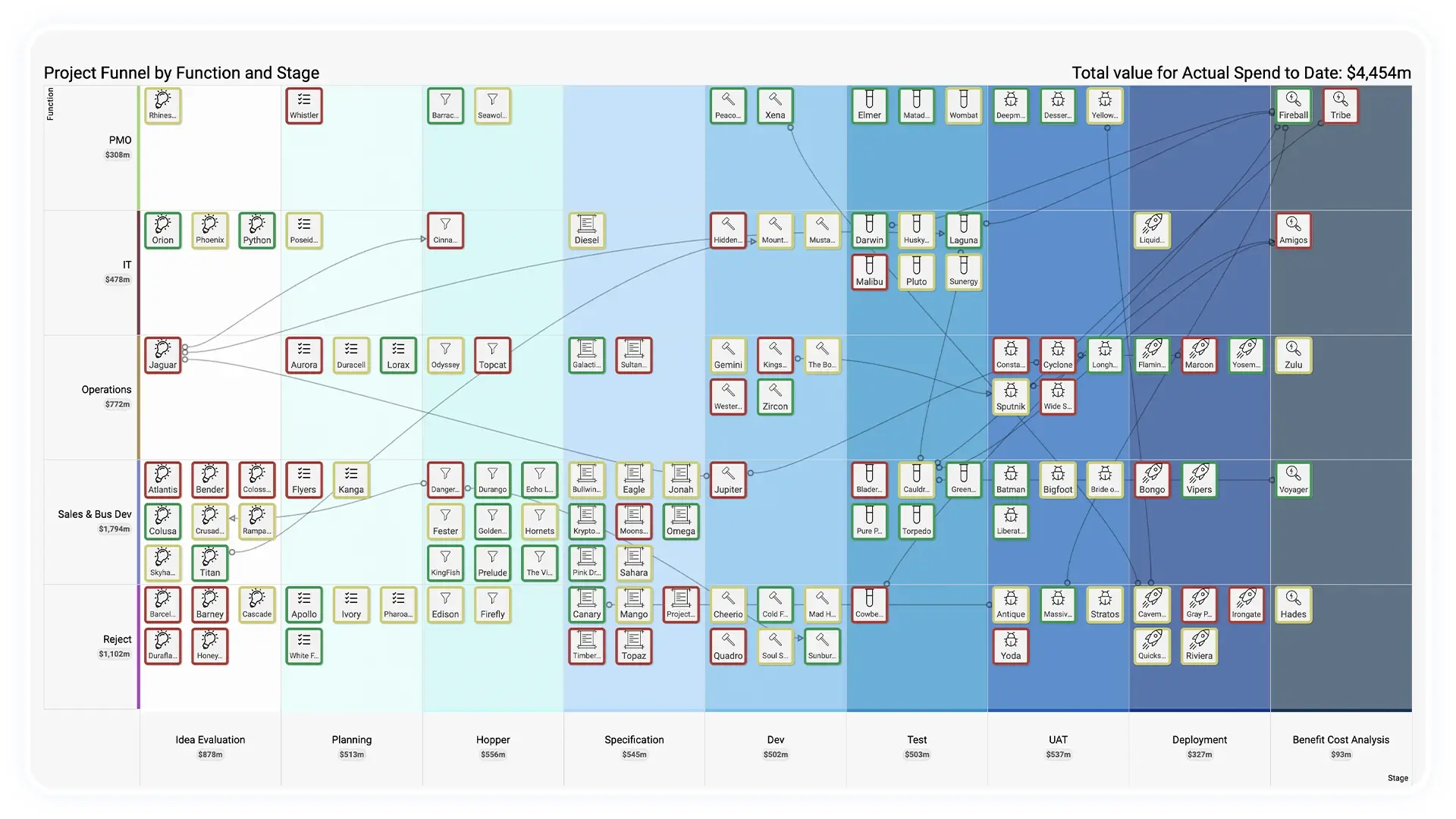
What is Project Portfolio Management?
Project portfolio management (PPM) is the coordinated management of an organization’s projects to ensure they collectively deliver maximum strategic value. It helps decision-makers evaluate, prioritize, and balance initiatives based on objectives, resources, risks, and returns. Rather than focusing on individual projects, PPM provides a high-level view of how all projects work together - enabling smarter investments, optimized resources, and better alignment with business goals.
Why SharpCloud?
SharpCloud is a software platform for portfolio and project managers, PMO leaders, executives, and team members who need better visibility, agility, and decision-making in complex, fast-moving portfolios. It solves challenges like time-consuming manual processes, lack of real-time information and insights, and disparate and unconnected data sets. SharpCloud easily integrates with your existing line of business tools, improving the process and enhancing your existing data.

Significant time savings and efficiency gains
SharpCloud replaces the manual, time-consuming effort of creating slide decks and Excel roadmaps freeing up time for strategic work. Real-time updates keep roadmaps current, eliminating outdated information. Automated reporting turns weeks of work into minutes, boosting efficiency across the organization.

Better portfolio visibility and decision making
SharpCloud transforms complex portfolios into clear, visual narratives, highlighting project alignment, dependencies, and gaps. Unlike traditional tools, SharpCloud offers interactive, real-time visualizations that provide a connected view of all data. Instantly assess status, risks, and multi layer relationships for faster decisions.

Flexible and agile portfolio management
Unlike rigid enterprise tools, SharpCloud is highly configurable and built for the dynamic and complex nature of portfolios. Customizable visualizations and filters let stakeholders see what matters most, while its adaptability supports roadmapping, tracking, reporting, prioritization, and financial planning.
Project and Portfolio Management Software Key Features
Project Relationship Mapping
Connect projects, initiatives, and goals, and visualize critical dependencies to make large complex programs more manageable. Maintain context and remain strategically aligned across the portfolio.
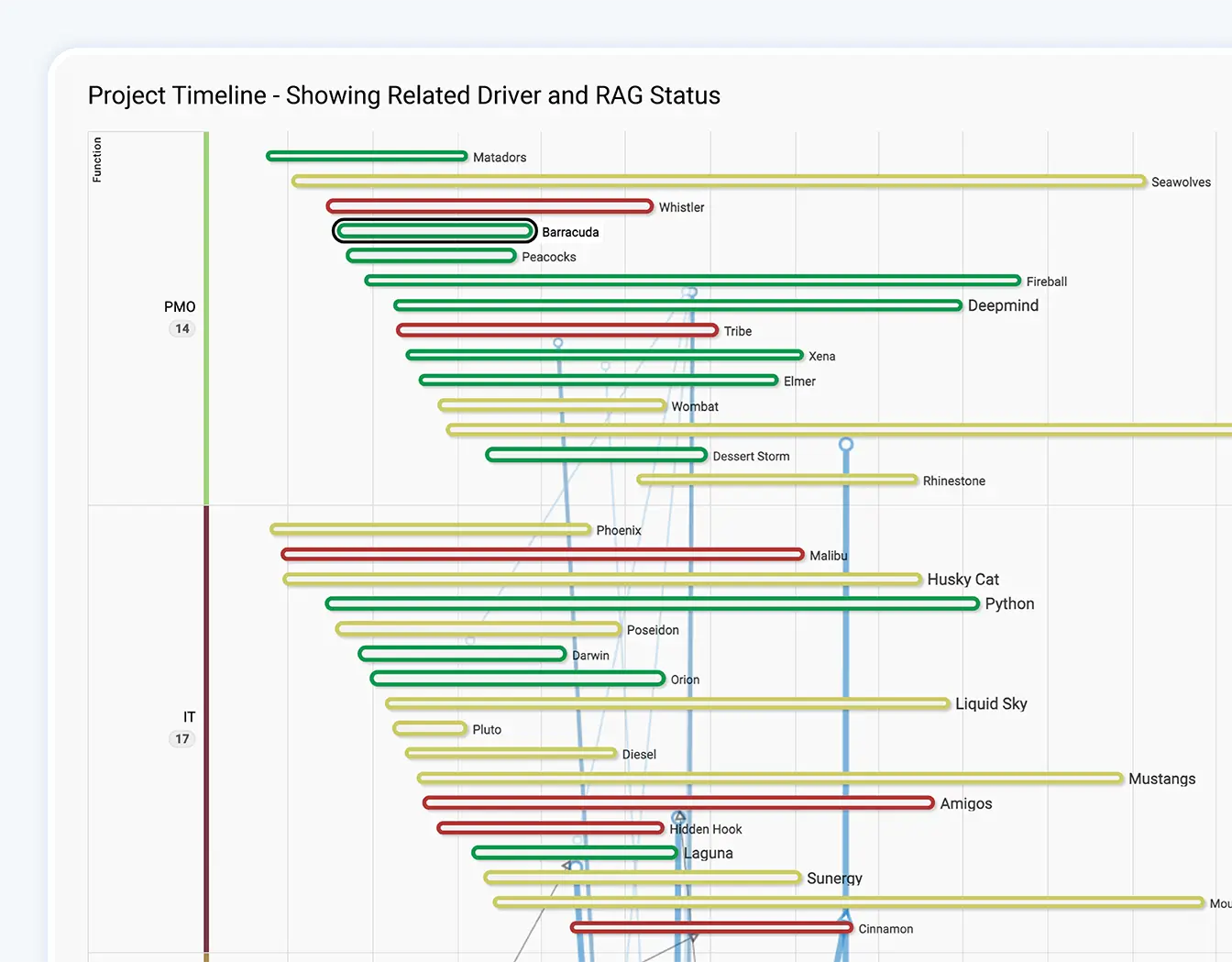
Dynamic Data Updates
Automated connectors enable seamless data integration from Power BI, Microsoft Project and other project management tools you use. This ensures smooth workflows without additional manual effort.
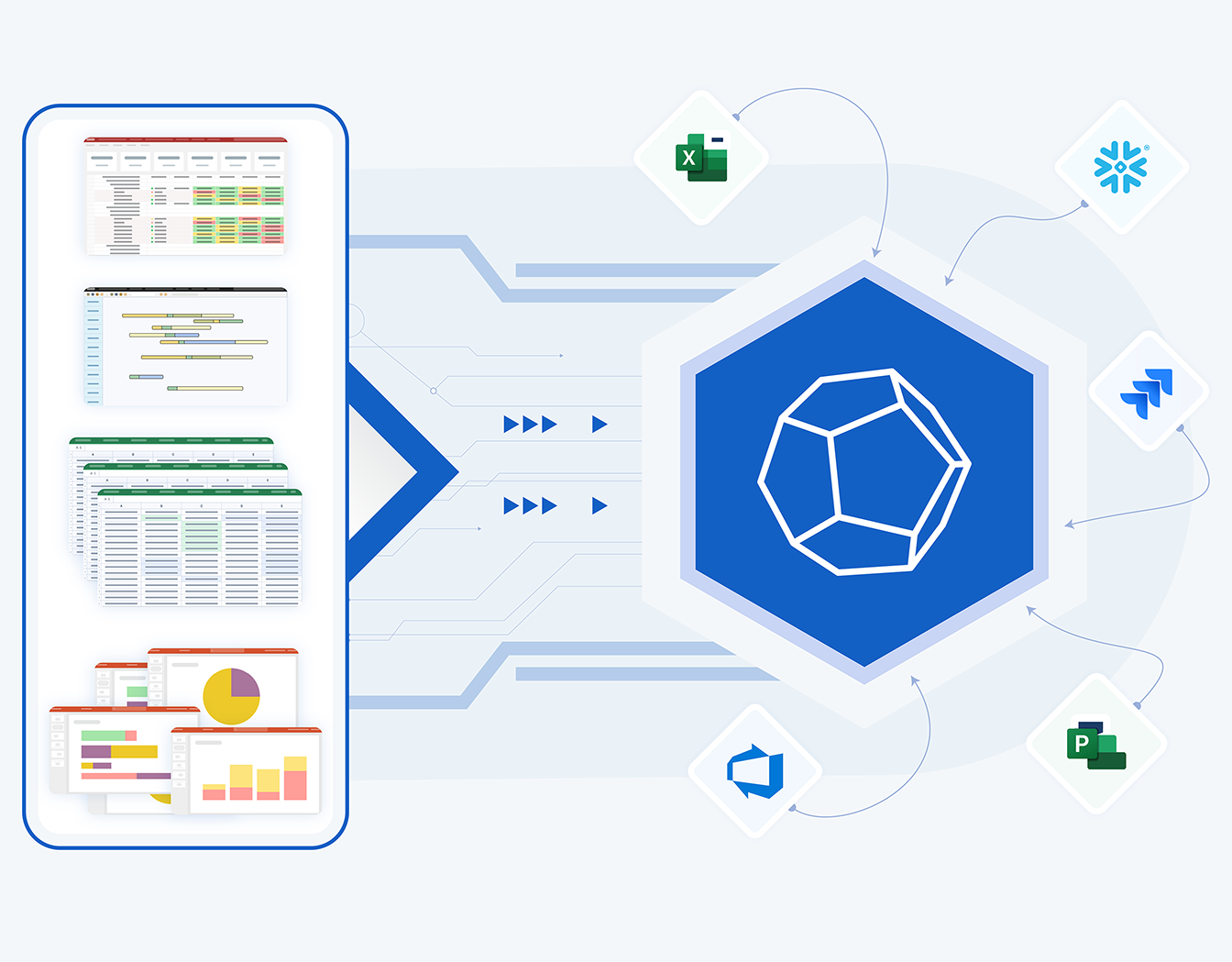
Powerful Filtering
Configure filters simply and efficiently to quickly adapt visuals based on project phases, priorities, or teams. This adaptability supports agile decision-making, making it easier to effectively manage complex portfolios in real time.
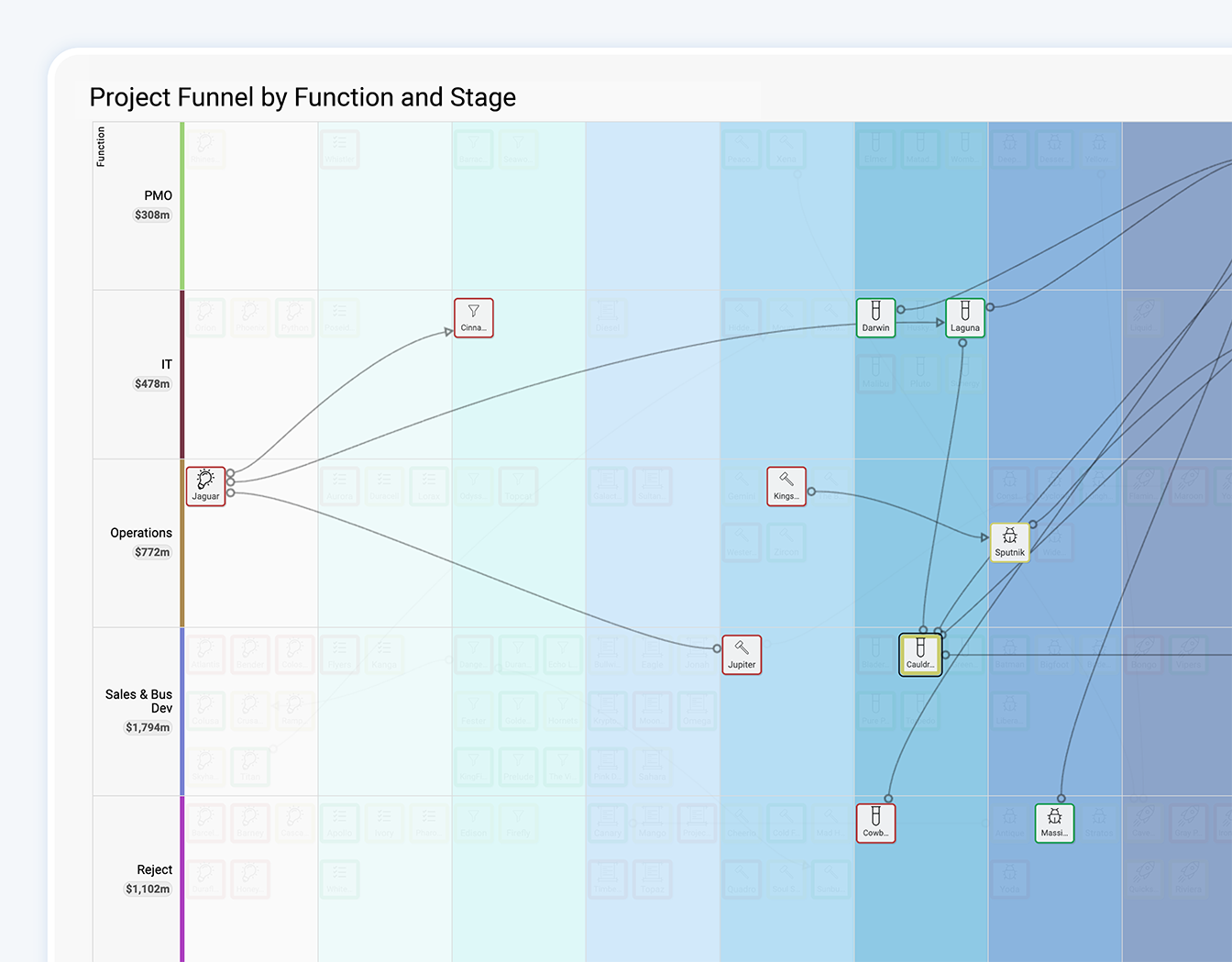
Deep Dive Capabilities
Users can drill into specific project plan details while maintaining a high-level overview. Having all project data in one centralized, interactive platform provides a single source of truth and improves trust within the team.
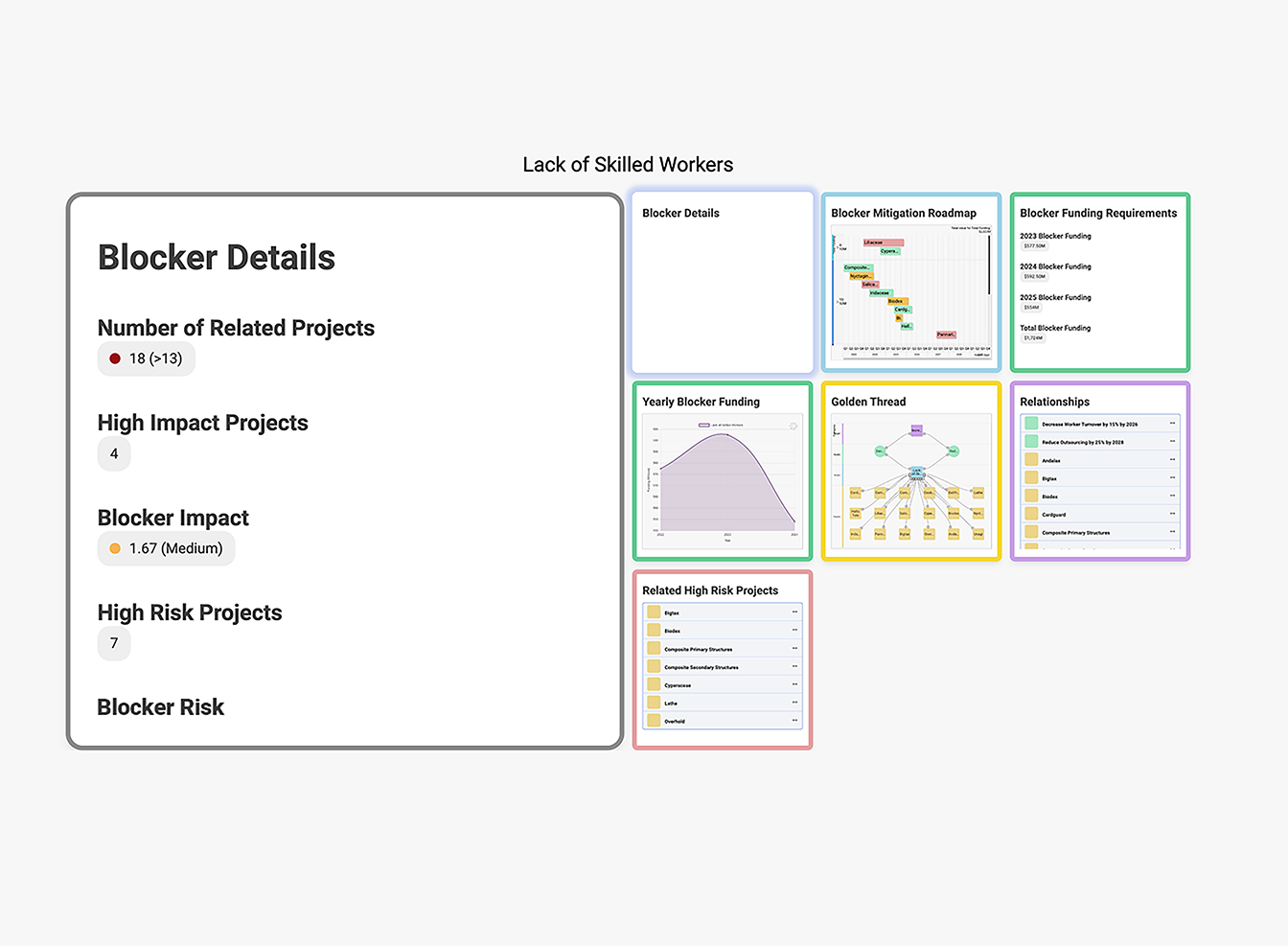
Custom Views
Easily adjust axes to instantly reshape your visualization, revealing new insights and perspectives. Quickly create impactful visuals tailored to you and your stakeholders, ensuring each team sees the most relevant real time data at a glance.
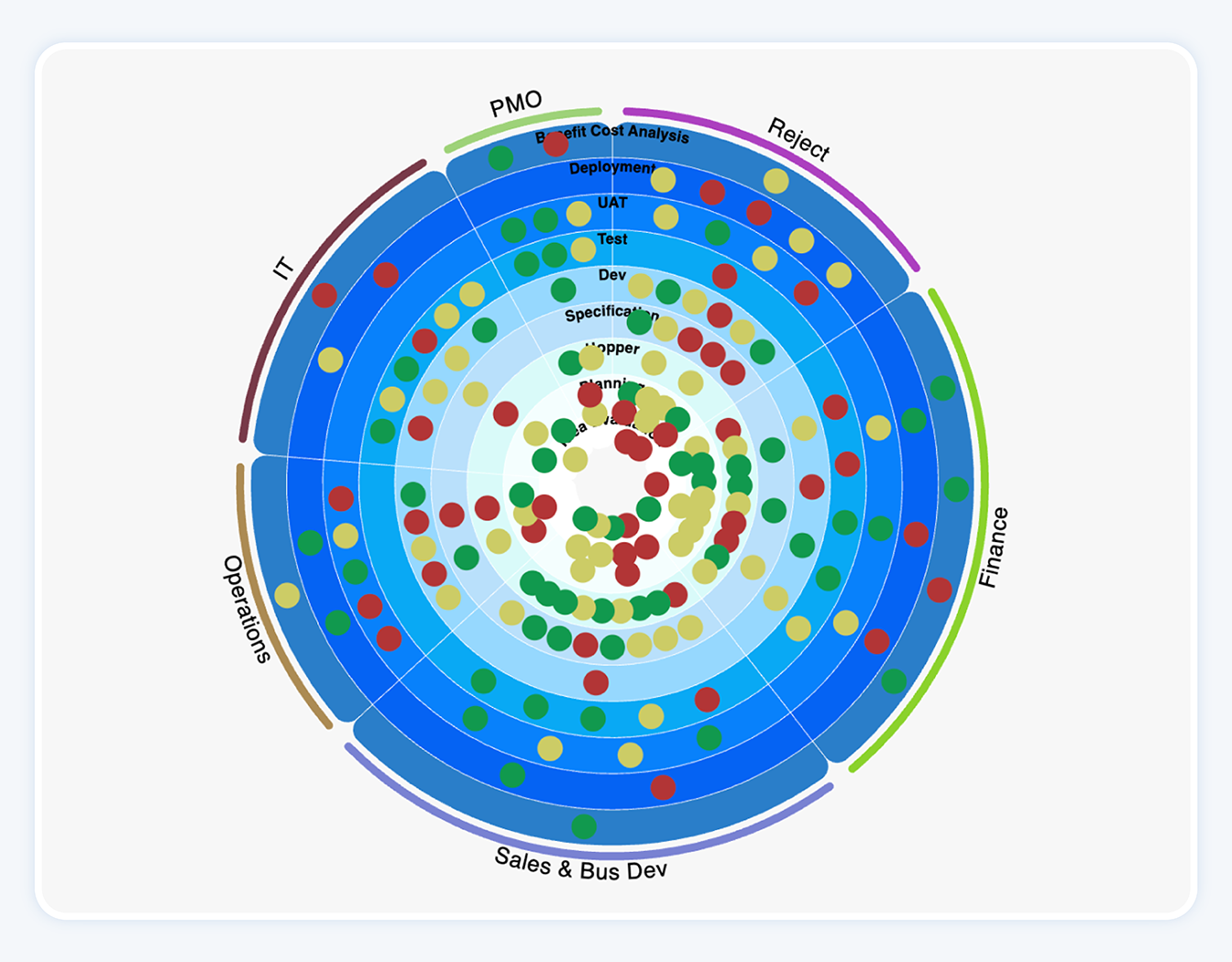





"Traditional exclusive portfolio management tools enforce control through rigid processes, but modern portfolios thrive in unpredictability. In the era of digital transformation, organizations manage a mix of large and small projects, demanding fast product development and data-driven decisions. Portfolio managers must navigate turbulence, ensuring seamless progress and continuous value creation."
Want to see how SharpCloud's portfolio management software can help you?
Our demo covers:
- Real-time visibility into your portfolio
- Interactive visuals for tracking projects and dependencies
- Seamless data integration for a connected view
- Dynamic decision-making without static reports or rigid tools
- Tailored insights to uncover connections and drive better outcomes
If your team uses it, we integrate with it
SharpCloud seamlessly integrates with existing data sources via Data Connectors, ensuring smooth data flow without heavy IT overhead.
It works alongside tools like Snowflake, Jira, and PowerBI, providing powerful portfolio analysis and visualization without requiring a full system overhaul. By eliminating duplicate manual entry, SharpCloud saves time and makes the most out of the data you already have.
Resources

In today's fast-paced business environment, staying ahead requires more than just traditional project management tools and methods.
Read More
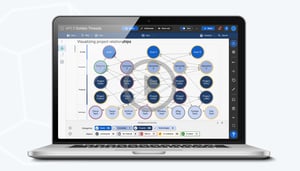
Understand how projects, technologies, and people align with your goals and strategies, allowing you to swiftly assess the effects of change and drive insightful decisions.
Read MoreYour data is safe with us
We offer flexible hosting options to meet a wide range of security and compliance requirements. SharpCloud also comes with Role-Based Access Control, giving you precise control over what data users can view or edit at a granular level.
FAQ's
Each situation is slightly different and we will work with you to tailor how we get up and running.
If you have data ready, you can start building valuable views and uncovering insights within a few hours. However, for a more complete setup, including stakeholder input, tailored views, and training, we typically run a 1-month Proof of Value. During this time, we refine visualizations through iterations, ensure they answer key questions, and equip you to be self-sufficient in SharpCloud. While setup speed depends on available time and collaboration, most users see meaningful results quickly.
Not necessarily. We can create data within the platform itself to give you an idea of what is achievable. If you have some data, that's even better - it helps you relate to the insights more effectively, but no data is perfect! One of the key benefits of visualizing your data is uncovering gaps, trends, and inconsistencies, helping you refine and move forward with confidence.
Yes, we have 3 subscription types - Creator, Collaborator and Read-Only subscriptions. Creators can do everything, build and maintain stories and configure data connectors and so on. Collaborators help keep the data up to date and Read-only users can view, interact and comment on the story. More info can be found on our pricing page.
Absolutely. In SharpCloud, we have Role Based Access, so you can design roles for users and determine what data they can edit or see.
Your data can be hosted in Microsoft Azure Data Centers across the UK, US, or EU, as well as other regions if needed. SharpCloud is also available on the UK and US Government Cloud for added security. If you prefer, you can host SharpCloud on-premises or on your chosen cloud platform, with support for both Windows and Linux/Docker environments.
You can use Data Connectors, where we have native connections to tools such as Excel, Microsoft Project, PowerBI, Snowflake, Azure DevOps, Jira and many more. We also have a partnership with CData where they have access to over 250+ connectors that can be leveraged. We do have API's which can be used to create, update and delete data in a story too.
SharpCloud portfolio and project management software solves several key challenges in PPM by addressing visibility, collaboration, and decision-making gaps. Here are some of the major challenges it helps overcome:
1. Lack of portfolio visibility
Traditional ppm project management tools struggle to present a clear, real-time view of projects, dependencies, and strategic alignment. SharpCloud provides interactive visualizations that make complex portfolios easy to understand at a glance.
2. Siloed data & poor collaboration
Data is often scattered across spreadsheets, PowerPoints, and disconnected collaboration tools, making collaboration difficult. SharpCloud centralizes portfolio data, enabling team members to work together seamlessly, reduce duplication, and share real-time insights.
3. Static, outdated reporting
PPM often relies on manual, time-consuming reporting that becomes outdated quickly. SharpCloud's portfolio management solution integrates live data, allowing leadership to project plan and make faster, informed decisions without waiting for static reports.
4. Rigid, one-size-fits-all tools
Many portfolio planning tools in project management enforce strict processes that don’t adapt to fast-changing portfolios. SharpCloud is highly configurable, supporting agile decision-making, rapid reprioritization, and diverse use cases like roadmapping, risk management, resource management, initiative tracking, and investment prioritization.
5. Difficult stakeholder engagement
Getting stakeholders aligned and engaged is often a challenge with complex data. SharpCloud’s ppm project management software offers dynamic, interactive views which make it easier to present insights, highlight risks, and drive more effective discussions.
By solving these challenges, SharpCloud helps organizations streamline strategic portfolio management and PPM, improve efficiency, optimize resource allocation, and drive better strategic outcomes.
.png?width=200&height=137&name=ClientLogo_MinistryOfDefence%20(product).png)
.png?width=200&height=117&name=ClientLogo_Amcor%20(product).png)
.png?width=200&height=117&name=ClientLogo_ThermoFisher%20(product).png)
test.png?width=200&height=117&name=ClientLogo_GeneralDynamics%20(product)test.png)
.webp?width=200&height=117&name=ClientLogo_UltraPrecision-Short%20(product).webp)
-1.png?width=200&height=117&name=ClientLogo_Ofwat%20(product)-1.png)
.png?width=200&height=117&name=ClientLogo_NetworkRail%20(product).png)


.webp?width=200&height=117&name=ClientLogo_Enetris%20(product).webp)